Heinz Isler: Natural Hills on Different Edge Lines
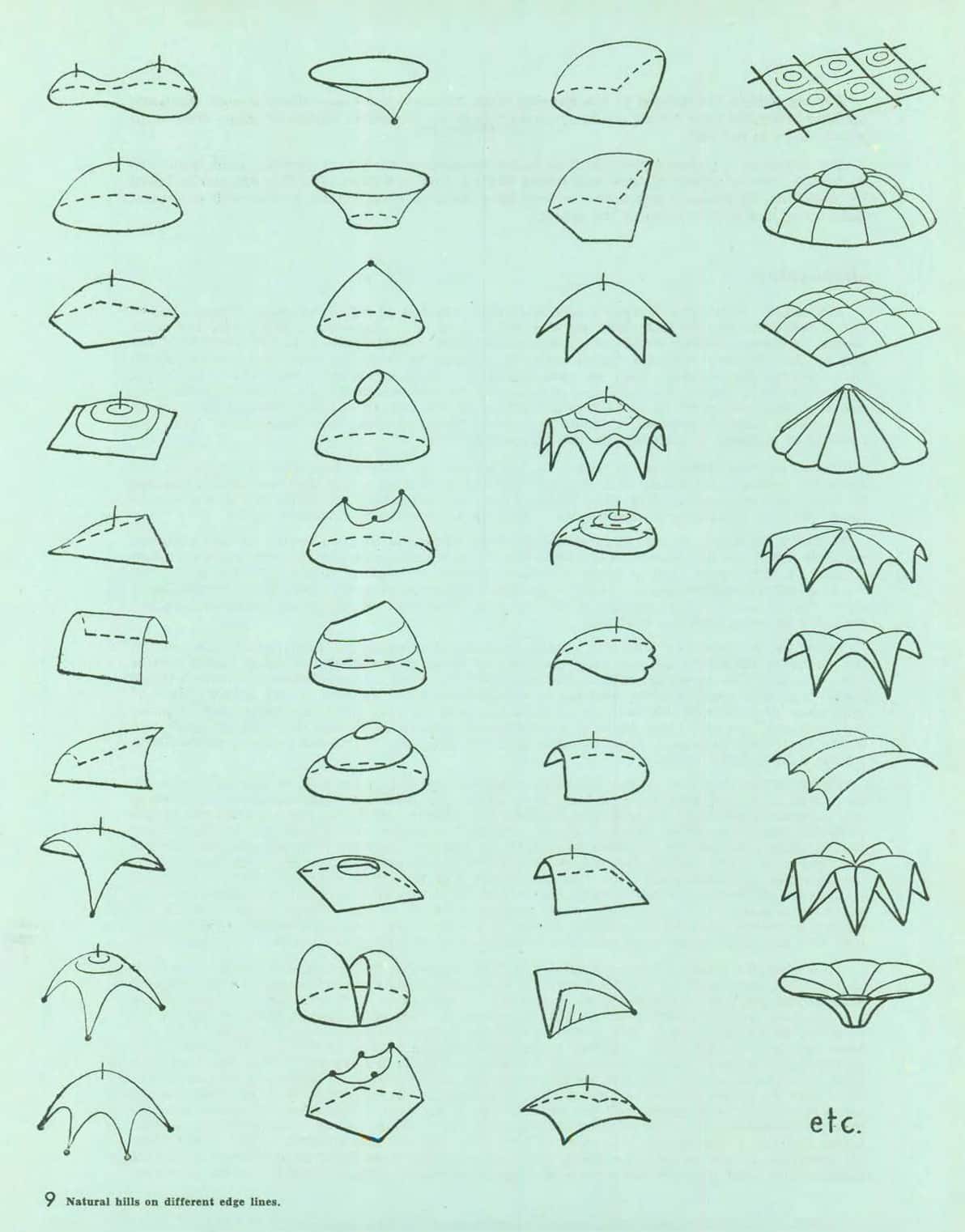
I first encountered Heinz Isler’s thin reinforced concrete shells when I saw his presentation ‘Third Decade of Structural Shells’ at the thirtieth anniversary symposium of the International Association for Shell and Spatial Structures (IASS), in Madrid, in September 1989. This was the first time I saw his inspirational drawing ‘Natural Hills on Different Edge Lines’, originally included in his short but momentous paper ‘New Shapes for Shells’, presented at the first Congress of IASS, also held in Madrid, in September 1959.
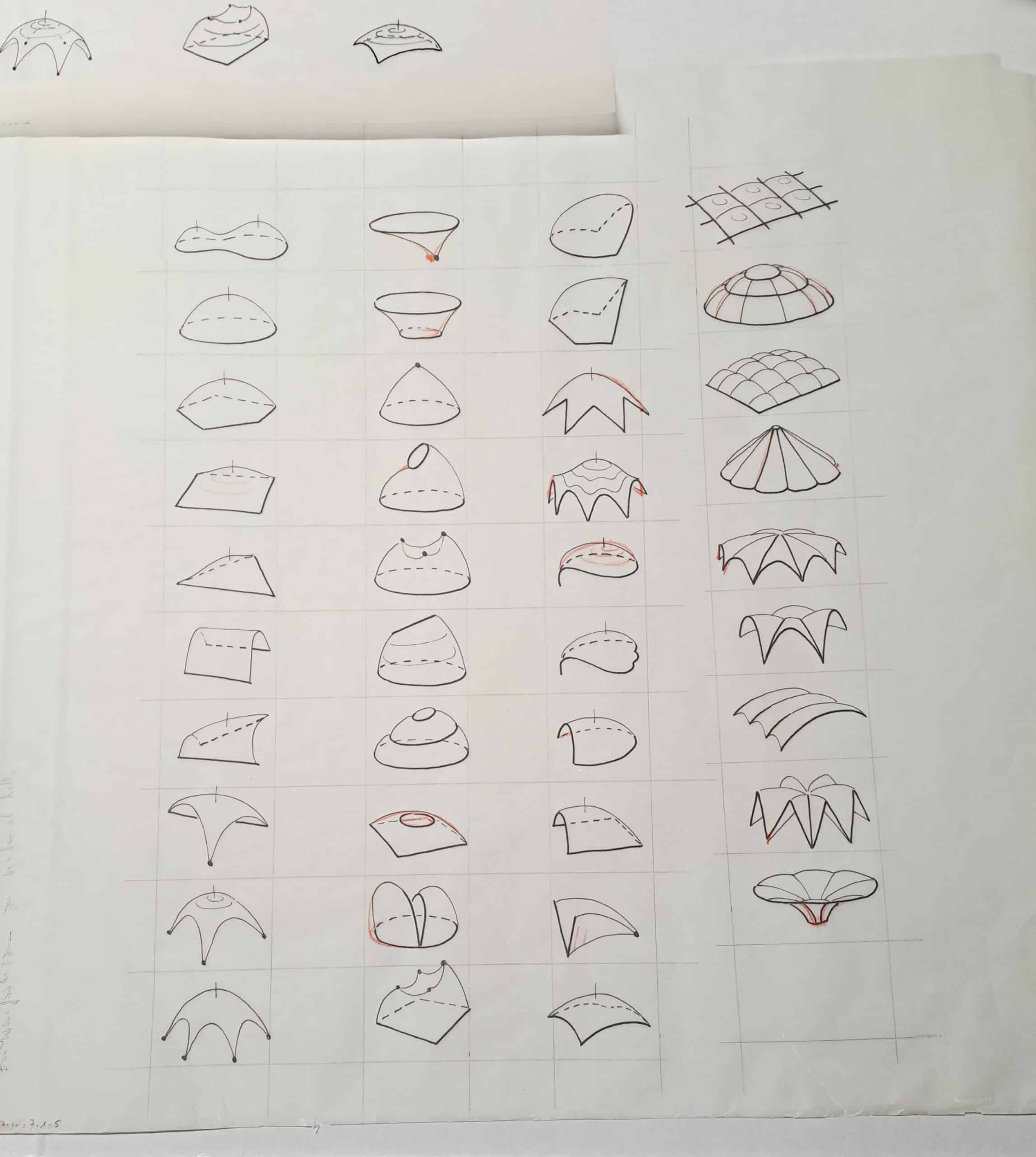
On that earlier occasion the audience had been absolutely astounded! In front of renowned engineers of the time—including Eduardo Torroja (Spain), Nicolas Esquillan (France), Kalman Hajnal-Kónyi and Ove Arup (UK) and architects like Sam Scorer (UK)—Isler had challenged the status quo of thin reinforced shell design. Instead of following the established methods for designing the barrel vaults, spherical domes, conoids and the ruled surface hyperbolic paraboloid forms of Félix Candela, by geometrical and mathematical formulae, he revealed how it was possible to create elegant and highly efficient shells through physical modelling.
How was this achieved? Isler identified three techniques: the freely-shaped hill; membrane under pressure; and hanging cloth reversed [inverted], which he considered the most satisfactory. The first two were illustrated by built examples—a small nuclear bomb shelter and warehouse roofs respectively—but to demonstrate the third, the hanging cloth reversed, he showed photographs of his experiments with fabric sprayed with water on cold Swiss winter nights—a 3-metre span ice shell made from a frozen cloth less than 1 mm thick!
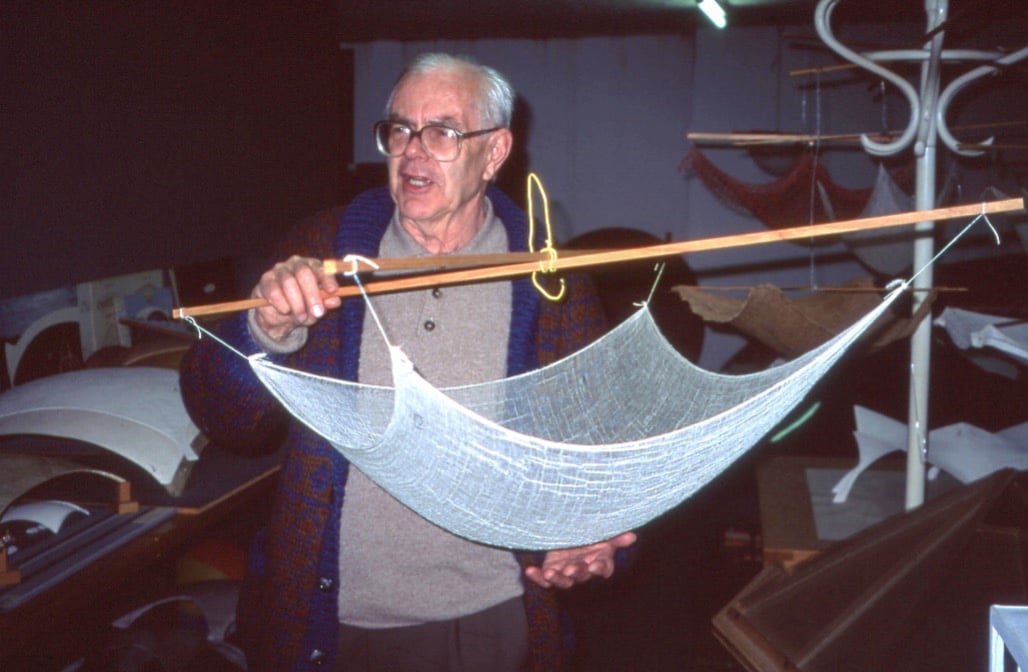
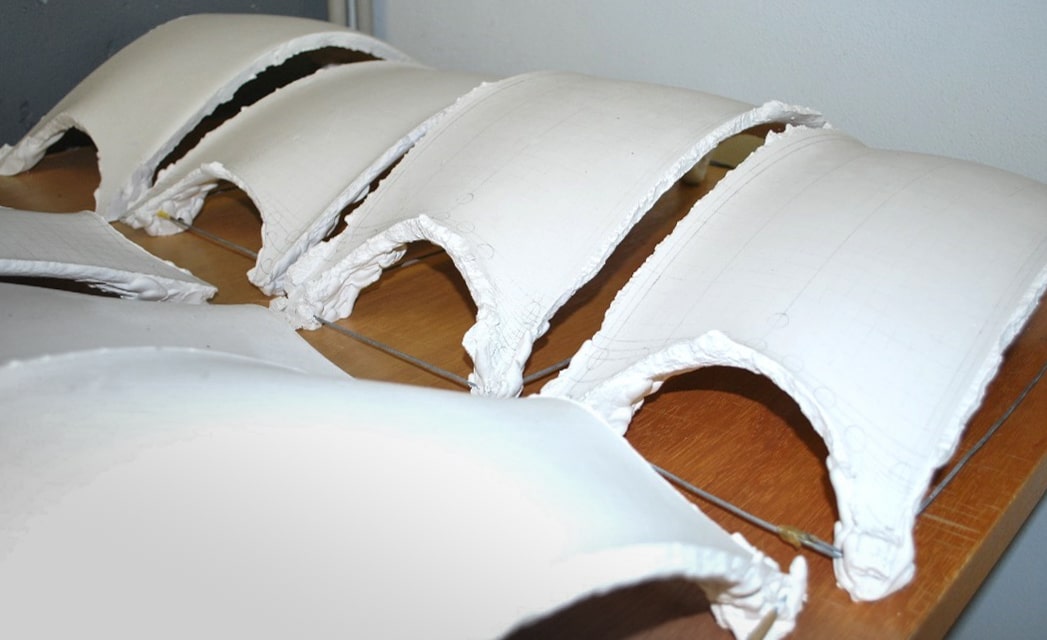
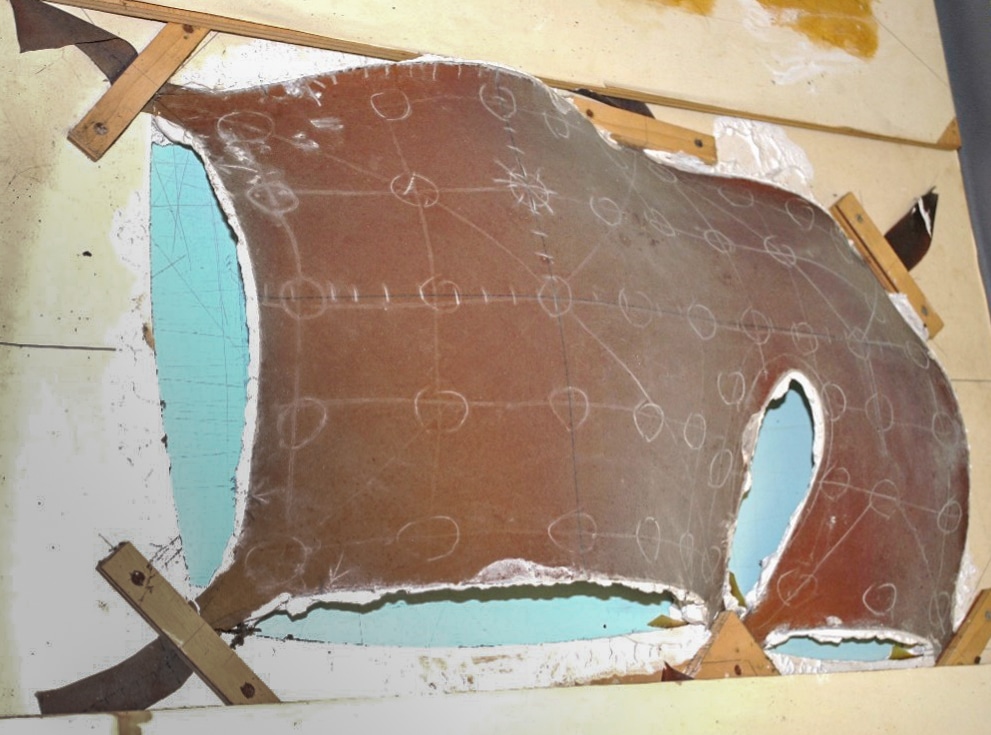
Subsequently, this was the physical modelling technique he applied most to refine the shape of his most spectacular free-form shells—Gips Union, Bex (1968); Deitingen Süd (1968); Pavillon Sicli, Geneva (1969/70); Naturtheater, Grötzingen, Germany (1977-8); and the much-repeated tennis halls.
However, undoubtedly, the most sensational illustration in his paper was the 10-row x 4-column grid with 39 thumbnail sketches offering a selection of different shell forms, which he called ‘Natural hills on different edge lines’. As you can see, the final space in the grid was filled with etc. to indicate that the possibilities were, in fact, endless.
Isler’s presentation had a huge impact. He was subjected to a barrage of questions and a prolonged discussion punctuated by a coffee break—the discussion reported in the Bulletin of IASS was around five pages. In response to comments from Torroja Isler emphasised the importance of shape, of finding an efficient three-dimensional form. Answering a question from Esquillan he described how his non-geometric forms could be constructed economically. Arup, perhaps with Jørn Utzon’s design for the Sydney Opera House in mind, remarked that architects might be led to propose functional shell forms that turned out to be difficult and expensive to build.
To close, Isler was happy to acknowledge the limitations of his form-finding methods. However, he maintained that they could be applied to create an infinite spectrum of exhilarating and elegant thin shell forms.
His concluding words were:
‘…I do not say any form which you construct this way is a good form, or must lead to a good solution; but there are forms which can lead to good solutions, and of course that is only the first link in a whole chain of investigations, and the other links in the investigation, model tests, measuring of the first structure, or a model test in scale 1:1 as we have it out here, these are of primary importance. So the engineer[‘s] problem is remaining all the same, but it is the first link, here, the shaping which has been lacking up to now, and this method can lead to a very nice solution. Thank you.’ [1]
An extensive review of Heinz Isler’s 1961 paper can be found in: John Chilton, ‘39 etc… : Heinz Isler’s infinite spectrum of new shapes for shells’ in Alberto Domingo and Carlos Lazaro (eds.), Proceedings of the International Association for Shell and Spatial Structures (IASS) Symposium 2009, Evolution and Trends in Design, Analysis and Construction of Shell and Spatial Structures, (Valencia: Editorial Universitat Politècnica de València, 2009), pp. 51-64. Available at: http://hdl.handle.net/10251/6465 (accessed 13 November 2023)
John Chilton is a Chartered Civil Engineer and Emeritus Professor of Architecture + Tectonics in the Department of Architecture and Built Environment, University of Nottingham.
Notes
- Heinz Isler, ‘New Shapes for Shells’ in Bulletin of the International Association for Shell Structures, No. 8, (Madrid: IASS, 1961), pp. 123-230.
